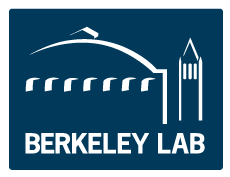Presentations
Presentations
Below are presentations given by Berkeley Lab Building experts:
Title: Grid-Interactive Efficient Buildings: Potential Impacts on Regional Utility Loads
Presenter: Jared Langevin, research scientist, Lawrence Berkeley National Laboratory
Venue: 2020 ASHRAE Virtual Conference, Seminar 37: Characterizing the Grid-Interactive Efficient Building Resource: An Introduction to Building Energy Modeling and Demonstration Approaches at Multiple Scales
 Abstract: In the U.S., residential and commercial buildings consume 75% of total electricity; improving the efficiency and flexibility of building electricity use could therefore substantially increase the reliability and resilience of the U.S. electric grid while facilitating the integration of variable renewable energy generation sources. Yet, the magnitude of the potential U.S. grid resource from energy efficient and flexible buildings has not been quantified for a realistic set of emerging building technologies and operational approaches. This presentation introduces a new modeling framework that estimates the time- and location-sensitive value of grid-interactive efficient building operations across all utility regions in the contiguous U.S. Using this framework, the technical potential impacts of multiple building technology portfolios on key grid service metrics are explored. The modeling affirms the importance of the buildings sector as a potential demand-side resource for the power grid, finding up to 182 GW of net peak demand reduction potential in 2030 from deployment of a full suite of building efficiency and flexibility measures across regions – almost a quarter of total U.S. peak load in that year. Measures that affect residential and commercial cooling, residential heating, and commercial plug loads most strongly contribute to peak reductions, which vary considerably across regions. Challenges are observed around shifting significant amounts of building loads to off-peak hours, particularly when flexibility measures are deployed alongside efficiency measures.
Abstract: In the U.S., residential and commercial buildings consume 75% of total electricity; improving the efficiency and flexibility of building electricity use could therefore substantially increase the reliability and resilience of the U.S. electric grid while facilitating the integration of variable renewable energy generation sources. Yet, the magnitude of the potential U.S. grid resource from energy efficient and flexible buildings has not been quantified for a realistic set of emerging building technologies and operational approaches. This presentation introduces a new modeling framework that estimates the time- and location-sensitive value of grid-interactive efficient building operations across all utility regions in the contiguous U.S. Using this framework, the technical potential impacts of multiple building technology portfolios on key grid service metrics are explored. The modeling affirms the importance of the buildings sector as a potential demand-side resource for the power grid, finding up to 182 GW of net peak demand reduction potential in 2030 from deployment of a full suite of building efficiency and flexibility measures across regions – almost a quarter of total U.S. peak load in that year. Measures that affect residential and commercial cooling, residential heating, and commercial plug loads most strongly contribute to peak reductions, which vary considerably across regions. Challenges are observed around shifting significant amounts of building loads to off-peak hours, particularly when flexibility measures are deployed alongside efficiency measures.
Watch the presentation
***
Title: Beyond Efficiency and Putting the Duck on a Diet
Presenter: Mary Ann Piette, director, Building Technology & Urban Systems Division, Lawrence Berkeley National Laboratory
Venue: Stanford Professionals in Energy SPIE-switch Conference, 2018

Abstract: As we change the way we generate electricity, we need to change the way we use electricity.
The title refers to the duck-shaped graph of electricity use over the course of a day plotted along with how much electricity is being generated from solar. We need to be able to measure and control loads. Berkeley Lab has been modeling four demand response services: shape (incentivizing energy efficiency behavior and change), shift (mitigating ramps and capturing surplus renewables), shed (managing contingency events and coarse net load following) and shimmy (fast demand response to smooth net load and support frequency).
We are changing the way we generate electricity and so we need to change the way we use electricity. We're moving from a large-scale, remote system to more local systems that are distributed. Piette fully explains "the Duck Curve", why it is important and why it needs to go on a diet -- it's all about the way we use energy.